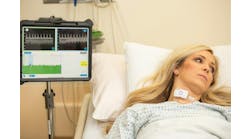The Phoenix, Az.-based Banner Health has announced successful results from its at-home telehealth pilot program for patients with multiple chronic conditions.
The Intensive Ambulatory Care (IAC) pilot program, done in partnership with the Netherlands-based Royal Philips, focuses on the most complex and highest cost patients —the top five percent of patients who account for 50 percent of healthcare spending. The program first launched in 2013 and aims to improve patient outcomes care team efficiency and prevent IAC patients from entering the acute care environment where costs are significantly higher.
As part of the pilot, Philips and Banner assessed the results of 135 patients to determine the effectiveness of the IAC program in meeting its clinical and financial goals. An analysis of the results of each patient's first six months demonstrated that the program:
- Reduced costs of care by 27 percent. This cost savings was driven primarily by a reduction in hospitalization rates and days in the hospital as well as a reduction in professional service and outpatient costs.
- Reduced acute and long term care costs by 32 percent. This cost reduction was primarily due to a significant decrease in hospitalizations.
- Reduced hospitalizations by 45 percent. Prior to enrollment in the IAC program there were 11.5 hospitalizations per 100 patients per month; after enrollment the acute and long-term hospitalization rate dropped to 6.3 hospitalizations per 100 patients per month.
- What’s more, the acute short term hospital stays decreased from 7.7 hospitalizations per 100 patients per month to 4.9; long term care home health or other facility stays decreased from 3.9 hospitalizations per 100 patients per month to 1.4; and the average number of days in the hospital per 100 patients per month also trended down from approximately 90 to 66.
“The results of our at-home telehealth pilot with Philips have been dramatic and are indicative of the exponential success such a program could have by engaging patients in their own care and building a strong support system around them" said Dr. Hargobind Khurana, senior medical director of health management Banner. "As we continue to expand this program we anticipate seeing further proof that telehealth programs can address readmissions rates reduce costs and improve the health and quality of life for patients with multiple chronic diseases."


